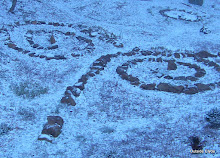(Still not there yet, fall wise.)

I stopped to get a closer look at the acorns that have been rat-tat-tating on their way to the forest floor because Chuck B wanted to know if my acorns were wormy or if they were still good.
Well I had to look.
They look scrumptious.
And then I took a closer look at the Oak trees themselves.

Oh Nuts!
These acorns were not coming from what I thought was a White Oak, Quercus alba. They were falling from some other kind of Oak with distinctly different leaves than the ones in "The View" in front of the house. There is more than one type of Oak in this forest.
So I did a mini survey and found three distinctly different Oak species in a small one acre upper portion of this property.

Thanks to the Woodscaping course I took I had a handy Common Forest Trees of North Carolina guide to try and determine what Oaks I do have. I don't think I have White Oaks anymore. The White Oak has rounded edges on the leaf lobe margins and mine were pointed and toothed.
I now think I have Red Oak, Quercus rubra, the four single leaves at the bottom.
Black Oak, Quercus veluntina, center left leaves and
Chestnut Oak, Quercus prinus, the top right leaves and the source of most of the acorns I collected, though there was a Red Oak in falling distance so this could be a mixed lot of nuts.
I also recall reading during the Woodscaping course that the Oaks as a group do sex each other on a regular basis and it is not uncommon to find natural hybrids. The Black Oak is said in the guide to have highly variable leaves and those center left leaves while less lobed than the quide shows are closest to the Black Oak. To be more certain that I have the correct ID I will need to get a closer look at its particular acorns because cup size and coverage of the nut can be a determining factor in species identification.
I still have much to learn.






6 comments:
Awesome! I'm learning my area's oaks too. Must post about that.
Thanks for the nudge Chuck.
That's a lot of different kinds of oaks in one spot. Can you plant some White Oaks if you don't have any? Your area is beautiful indeed. What an inspiring view.
I too was told by a horticulturist that the oak family hybridizes, especially the red oak family (which she characterized as, generally, the ones with points on their leaves.) Good luck to you in pinpointing this and i look forward to learning from you! Aren't white oaks supposed to be indigenous to your area also?
Bev, there are seven Oak species listed as being common in the WNC mountains with White Oak being one of them. From a distance of 40' looking up into the trees the leaf outline of the Red Oak looks a lot like the White, hence my confusion.
Dawn, there very well could be some White Oak here all ready. I just have to look.
Are any varieties considered "better" than the others? Down here, the Water Oak is almost a weed. It sprouts very easily, usually where you don't want a tree. It also grows so fast that it is very suseptible to wind damage. It's one of the most common trees to find on top of houses.
Post a Comment